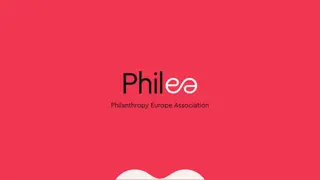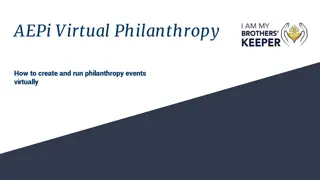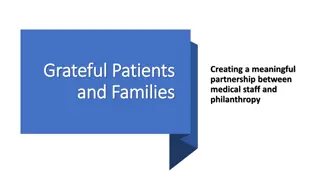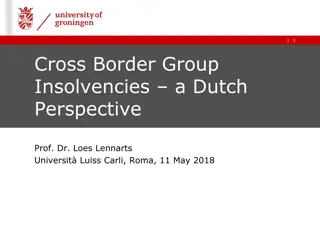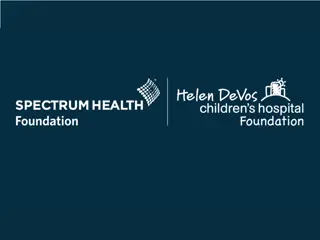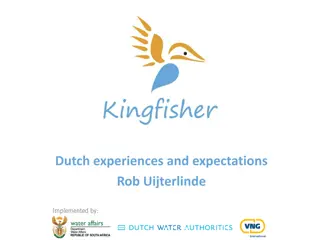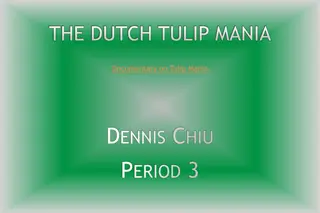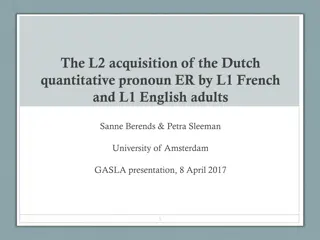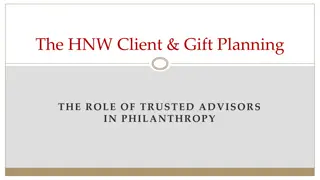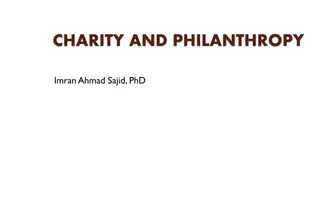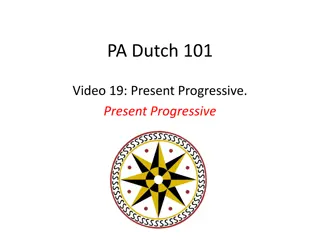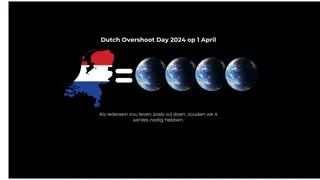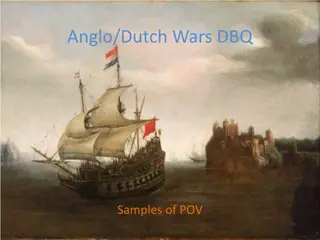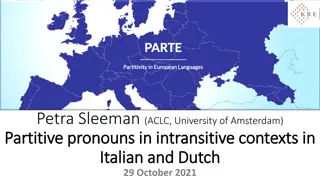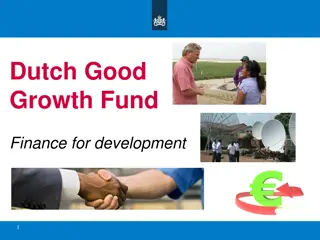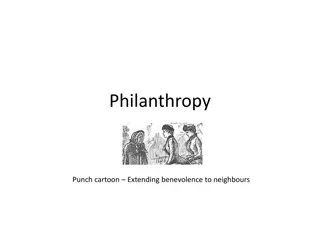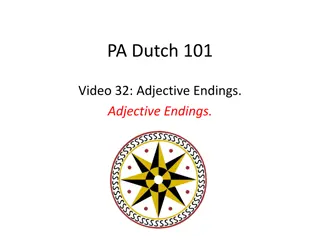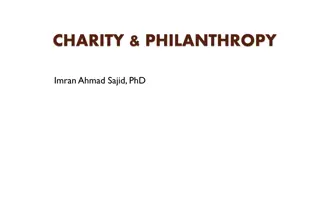Challenges and Opportunities in Dutch Philanthropy Sector
The Dutch philanthropic sector faces challenges such as changing donor behaviors and decreased donations. This has led to a discussion on the viability of crowdfunding as a funding strategy. With philanthropy being a significant economic force in the Netherlands, the sector is exploring new ways to engage donors effectively. The article also delves into the characteristics of crowdfunding and its potential impact on the traditional philanthropic model.
Download Presentation

Please find below an Image/Link to download the presentation.
The content on the website is provided AS IS for your information and personal use only. It may not be sold, licensed, or shared on other websites without obtaining consent from the author. Download presentation by click this link. If you encounter any issues during the download, it is possible that the publisher has removed the file from their server.
E N D
Presentation Transcript
A helping hand? Challenges for the Dutch philanthropic sector and the possibilities of crowdfunding The Dutch Days @ISTR| July, 12 VU University Amsterdam| The Netherlands Claire van Teunenbroek | Center for Philanthropic Studies, VU Amsterdam
Purpose Determine whether an increasing focus on crowdfunding is a logical step for the philanthropic sector 1. The Dutch philanthropic sector A changing donor, eight donation incentives (Bekkers & Wiepking, 2011) 2. Key characteristics of crowdfunding Funding strategy 12-7-2018 Dutch Days @ ISTR 2018 2
The Dutch philanthropic sector The non-profit sector in the Netherlands is an economic force of significance The total value of philanthropy in the Netherlands amounts to 0.85% of GDP, about 5.7 milliard euro Viewed as a complimentary source rather than a substitute to the government (Bekkers, de Wit & Felix, 2017) In 2015 about 81% of the households made a donation Average donation amount: 352 euros 12-7-2018 Dutch Days @ ISTR 2018 3
Philanthropy as a floating vest? Charities note that it has become harder to reach potential donors Donors are less likely to give In 1999 the Dutch donated 0.93% of GDP, this decreased to 0.77% in 2015 Subsidy cuts have not increased donations Funding strategies are less effective Are they still meeting up to the expectations of the donors? The most frequent solicitation method is still a house- to-house solicitation 12-7-2018 Dutch Days @ ISTR 2018 4
A changing donor Philanthropy is changing, and with it, the donors. There is a clear downward trend in the donation participation rate: less people donate Segregation & declining prosocial values (Bekkers, de Wit & Felix, 2017)) Less emotionally committed (GIN, 2017): giving from the hearth and the head Think about: What do these donors need and expect from charities before and after they made a donation? 12-7-2018 Dutch Days @ ISTR 2018 5
A pound for the orphans? Mr. Ford: Well, I want you to give me a pound, and then I go away and give it to the orphans. Banker: Yes? Mr. Ford: Well, that's it. Banker: I don't follow this at all, it looks to me as though I'm a pound down on the whole deal. Mr. Ford: Well, yes you are. Banker: I am! Well, what is my incentive to give you the pound? Mr. Ford: Well the incentive is to make the orphans happy. Banker: (puzzled) Happy? You quite sure you've got this right? Mr. Ford: Yes, lots of people give me money. Banker: What, just like that? Mr. Ford: Yes. Monthy Python, merchant banker (season3, episode 4) 12-7-2018
Eight donation incentives (Bekkers & Wiepking, 2011) Psychological benefits: warm glow feeling Awareness of need Solicitation: being asked Less important? Cost and benefits Altruism Reputation Values Efficacy: impact 12-7-2018 Dutch Days @ ISTR 2018 7
Funding strategy: crowdfunding Crowdfunding is an online funding tool, where any individual with a good idea can launch a philanthropic campaign. Developed here in Amsterdam in 2006 (Borst, 2014) 12-7-2018 Dutch Days @ ISTR 2018 8
Crowdfunding Main question: Is crowdfunding in line with the next generation of givers? Present 9 key characteristics of crowdfunding 12-7-2018 Dutch Days @ ISTR 2018 9
Online (1) 12-7-2018 Dutch Days @ ISTR 2018 10
Project oriented (2) 12-7-2018 Dutch Days @ ISTR 2018 11
Specific (3) 12-7-2018 Dutch Days @ ISTR 2018 12
Transparent (4) 12-7-2018 Dutch Days @ ISTR 2018 13
Democratic (5) 12-7-2018 Dutch Days @ ISTR 2018 14
Updates (6) 12-7-2018 Dutch Days @ ISTR 2018 15
Community and active (7) 12-7-2018 Dutch Days @ ISTR 2018 16
Not just a drop in the bucket (8) 12-7-2018 Dutch Days @ ISTR 2018 17
Rewards (9) 12-7-2018 Dutch Days @ ISTR 2018 18
No financial intermediaries (10) 12-7-2018 Dutch Days @ ISTR 2018 19
Key characteristics of crowdfunding Online Transparent Strategy Updates Project oriented Specific No financial intermediaries Democratic Beyond the ATM From giver to contributor Focus on relationships Rewards 12-7-2018 Dutch Days @ ISTR 2018 20
A helping hand? The use of the internet to reach potential donors has not increased since 2007 6% donated to an internet campaign in 2005 and 7% in 2015 (GIN). Makes up for <1% of the giving in the US and Netherlands 12-7-2018 Dutch Days @ ISTR 2018 21
Next step The scientific debate on crowdfunding is in the begin stage (Short et al., 2017) A significant amount of studies focused on increasing the success (Kshetri, 2015) How can we increase the popularity of crowdfunding? 12-7-2018 Dutch Days @ ISTR 2018 22
Thank you Claire van Teunenbroek, PhD candidate | Center for Philanthropic Studies Email: p.s.c.van.teunenbroek@vu.nl | Twitter: @PSCTeunenbroek Site: https://crowdfundingpscvt.wordpress.com/



